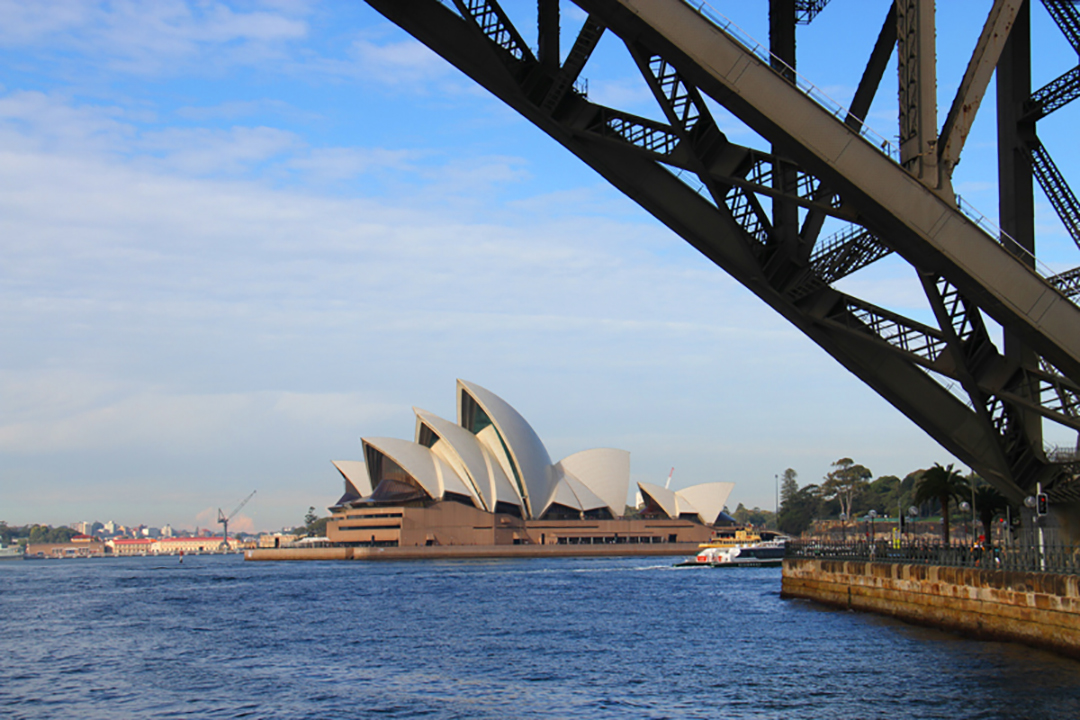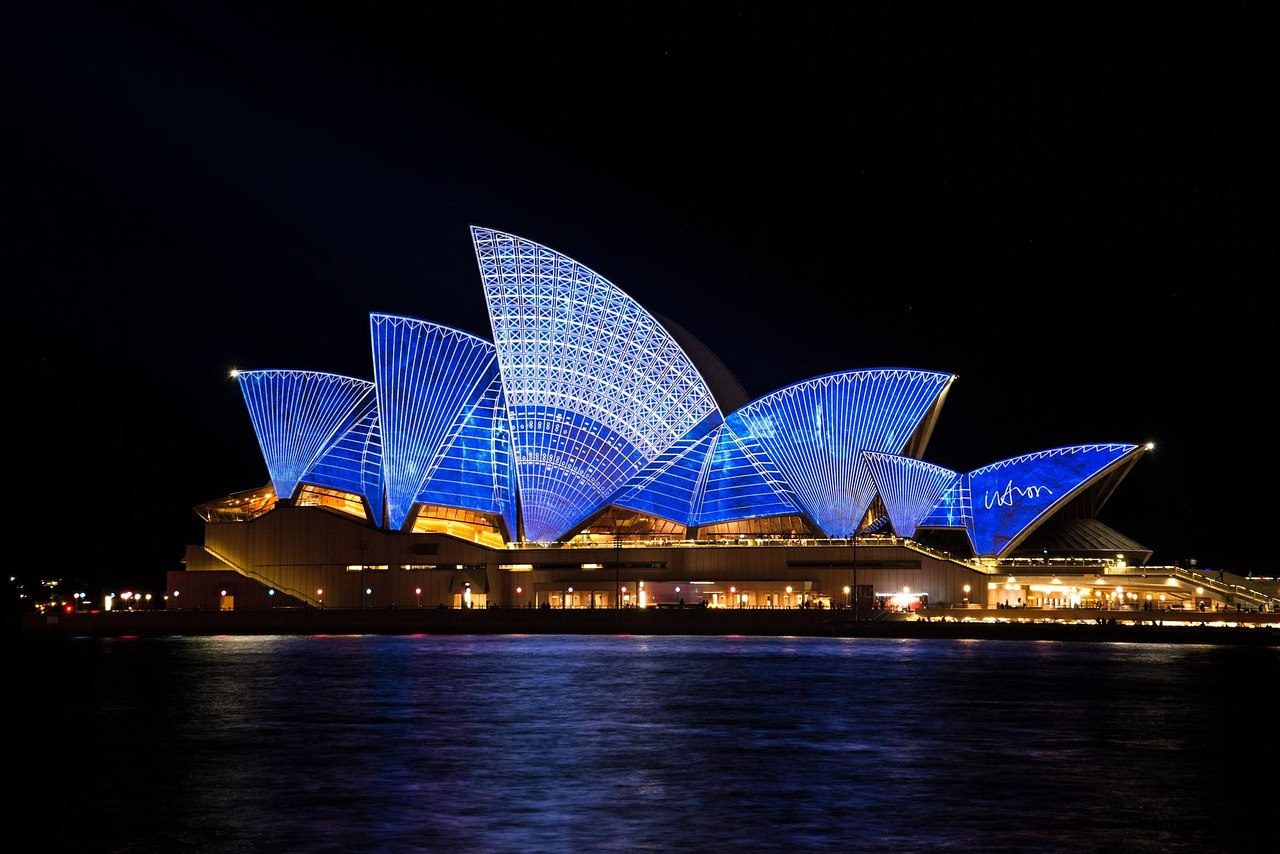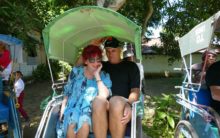Here are 11 interesting facts about the Sydney Opera House, Sydney’s Most Iconic Building. It is one of the most recognised Australian landmarks, along with Uluru and the Great Barrier Reef. The Sydney Opera House sits on Bennelong Point. The Point was first developed as a fort, named after Governor Macquarie. It was later used as a tram shed. Positioned on the most amazing harbour, next to the Sydney Harbour Bridge and it is not difficult to see why Australia and Sydney have been recognised as hot spot travel destinations.
The Sydney Opera House, Australia has been listed as a cultural property, a great architectural work that brings together multiple strands of creativity and innovation both in architectural form and structural design, and a is a recognised UNESCO World Heritage Site.
Have a read of 25 Reasons You Should Fall In Love With Sydney

The Sydney Opera House as we know it, nearly did not come to be. There is a long story, which is serendipitous, sordid, political, and sad of how Sydney, and indeed Australia finally got this uniquely designed Opera House.
Best Vantages points for seeing the Sydney Opera House
Contents
If you take the Manly Ferry, you will see the Sydney Opera House in all of it’s glory. If you do the Sydney BridgeClimb, (latest prices and booking details here), you will be rewarded with insane views of this most beautiful Sydney Harbour, and the Sydney Opera House. You could reward yourself with a helicopter ride over the harbour (latest prices and booking here) or better still have a Seafood Buffet Lunch Cruise on Sydney Harbour.
Why not enjoy a performance at the Sydney Opera House
A Sydney Opera House and Sydney Symphony Orchestra Dinner Package. For a guided tour at the World Heritage–listed Sydney Opera House go on a 1-hour walking tour.
11 Interesting Facts About Sydney Opera House
1. Jørn Utzon was born in Copenhagen, Denmark. An international competition to design the Sydney Opera House was announced in 1956, and Utzon entered his proposal. It was promptly relegated to the bin. It was serendipity when renowned American architect, Eero Saarinen, looked through the rejects and found Utzon’s entry. Utzon subsequently won the contract, despite never having seen the Sydney site in person.
2. Utzon became embroiled in the political controversies of the day, with his designs, schedules and cost estimates being questioned. It is said that when the Askin government gained power in 1965, the minister of public works Davis Hughes, withheld money from Utzon, to complete the Sydney Opera House. Utzon was stymied and subsequently resigned in 1966. This caused protests marches in the streets of Sydney, led by renowned Australian architect Harry Seidler, and Nobel Prize winning author Patrick White demanding that Utzon be re-instated, but to no avail… He and family left Australia, and Jorn Utzon never returned to see his concept completed.
However, the Danish people did not find this to be a befitting trait, and “Utzon’s son Jan Utzon confirmed recently recovered family archives showed his father was banned for life by Denmark’s association of architects for what they said brought shame to the profession.” He was eventually, after a long time, forgiven.
3. Australian Peter Hall was appointed the design architect for the Sydney Opera House in 1966 and had to change many of the conceptual plans of Utzon, to make it a practical work and entertainment environment. Many people have forgotten just how much Peter Hall did to realise the Sydney Opera House. Unfortunately, he passed away in 1995, penniless and forgotten. This is worth reading, The man who fixed the ‘plain illegal’ Sydney Opera House, and Richard Glover: the Sydney Opera House that Peter Hall built
4. The original estimate to build Sydney Opera House was $7 million. The final cost of Sydney Opera House was $102 million. The Sydney Opera House was mostly paid for by a State Lottery.

5. The Sydney Opera House construction has always been a fascinating topic of discussion amongst architects, artists and the general public. Utzon was influenced by his travels through Morocco, and his study of the Mayans and many believe that these informed his design. The sails-like structures give the opera house it’s unique look, and Utzon’s design of the Opera House has it sitting on on a podium. In 1963, it was altered so that it could hold the weight of the massive concrete structures it was supporting.
6. It was originally estimated that building Sydney Opera House would take four years. Work, however, commenced in 1959 with 10,000 construction workers on site. It was officially opened in 1973. 24 years.
7. What is the Sydney Opera House made of, you may wonder? There are 6,233 square metres of topaz coloured glass used in the construction of the building. The glass was made to order by Boussois-Souchon-Neuvesel in France in a shade used only by the Sydney Opera House. The sails are covered with 1,056,006 roof tiles, all imported from Sweden. These sails sit on a heavy podium, believed to be the biggest pillar in the world.
8. The Concert Hall Grand Organ took ten years to build. It’s the largest mechanical organ in the world with 10,154 pipes. There are 2,679 seats in the largest venue, the Concert Hall.
9. Paul Robeson, an American singer and actor was an active Civil Rights campaigner, and the first person to perform at Sydney Opera House. In 1960, he climbed the scaffolding and sang Ol’ Man River to the construction workers as they ate their lunch. As a man of the working class, this was significant.
Paul Robeson sings for the workers at Sydney Opera House
10. The Sydney Opera House was officially opened by Queen Elizabeth II on 20th October 1973, where Beethoven’s 9th Symphony featuring the Sydney Symphony Orchestra was performed. This was again played when the Sydney Opera House turned 40. On this special occasion, Jan Utzon, the son of Jorn Utzon attended the celebrations alongside Denmark’s Australian-born Princess Mary.
11. In May 2003, Sydney Opera House architect Jørn Utzon was awarded the prestigious Pritzker Prize – the Nobel Prize of the architectural community. Four generations of the Utzon family have been architects. Jorn Utzon passed away in 2008, but his son
“To me, it is a great joy to know how much the building is loved, by Australians in general and by Sydneysiders in particular” Jørn Utzon
So random,
In the 1980s, a net was installed above the orchestra pit in the Opera Theatre after a live chicken walked off the stage during a performance of Boris Godunov and landed on a cellist.
This iconic and stupendous landmark has been shrouded in controversy, but these 11 Interesting Facts About Sydney Opera House may help to explain its enigmatic and serendipitous existence.
Where to Stay in Sydney
For central locations that are accessible to many of Sydney’s iconic attractions, we recommend the following hotels and apartments.
Adina Apartment Hotel Sydney Darling Harbour
You cannot beat this location at King St, Wharf in the beautiful Darling Harbour Precinct. These are spacious and affordable apartments with balcony, and next door to the major attractions like the Wild Life Sydney Zoo and Sea Life Sydney Aquarium. The CBD and Barangaroo are both within easy walking distance. Check current prices on TripAdvisor
Metro Aspire Hotel, Sydney
In another perfect and quiet location is the Metro Aspire Hotel, Sydney located in the leafy suburb of Pyrmont. It is close to the Powerhouse Museum, Chinatown and Darling Harbour. The rooms are spacious, and most have balconies to look over the city lights. Check current prices on TripAdvisor
Pier One Sydney Harbour, Autograph Collection
Located right on Sydney harbour and nearly under the beautiful Sydney Harbour Bridge, Pier One Sydney Harbour, Autograph Collection is a luxury hotel. The hotel is in the heart of Sydney’s historic Rocks distirct, and next door to the Sydney Theatre Company. The hotel has a nautical theme and its own pontoon. Check current prices on TripAdvisor



Ended up costing $102 millions? I guess that’s cheap compared to today’s buildings, but that’s still 14X the cost estimate… someone didn’t do a very good job estimating.
They blew the budge just a bit, but we are so pleased to have this most beautiful Sydney Opera House.
Truly an icon. Nothing better than flying into Sydney and seeing it!
We never tire of seeing it, and get that warm and fuzzy feeling every time we fly back in and see the Sydney Opera House.
What a sad story about Jørn Utzon, it is unfortunate that he never got to see the opera house completed. I didn’t know Sydney Opera House had such a rich history, I would love to visit one day.
It was a sad story, but he got embroiled, unwittingly, in the politics of the day. I spoke to my mother about this, and she said it was ugly and he was a pawn in the system.
Those are interesting facts, especially the size of the organ. Wow. I think there is a placard about the Queen opening it, as I did know that. And the chicken – well I giggled when I read that one.
The chicken in the Sydney Opera House is a great story.